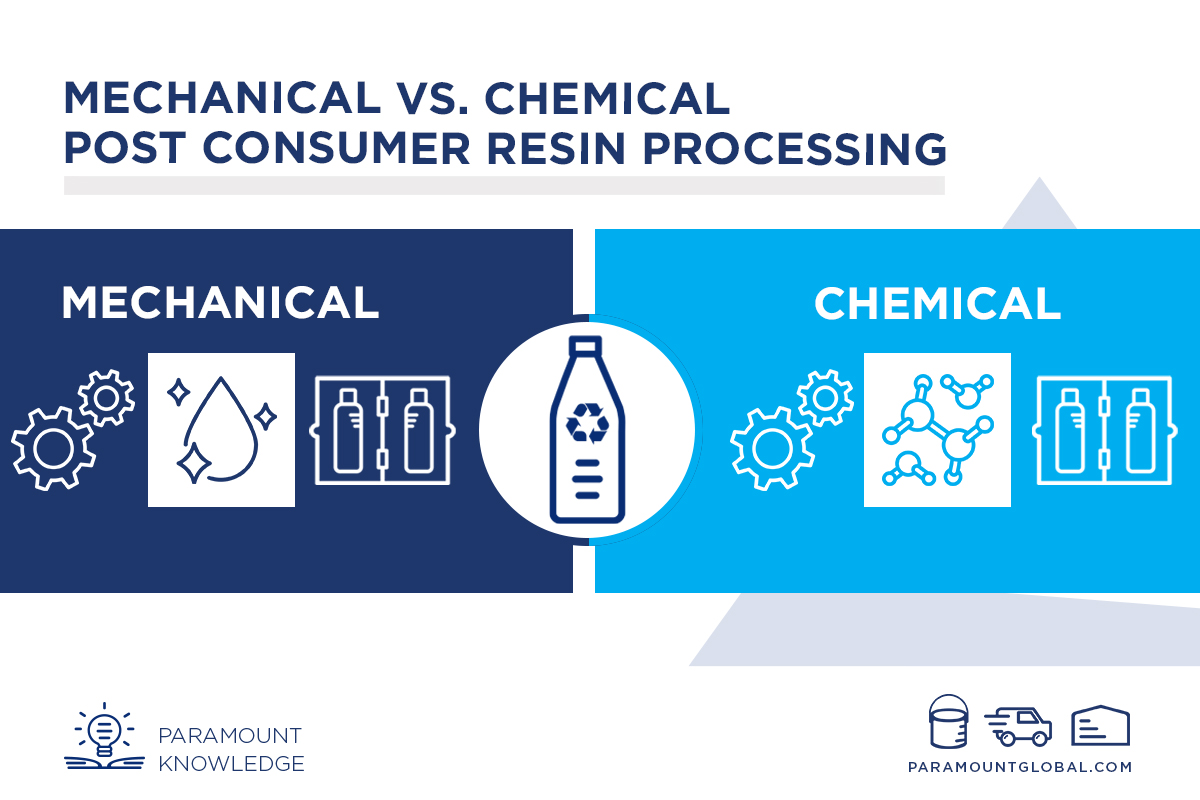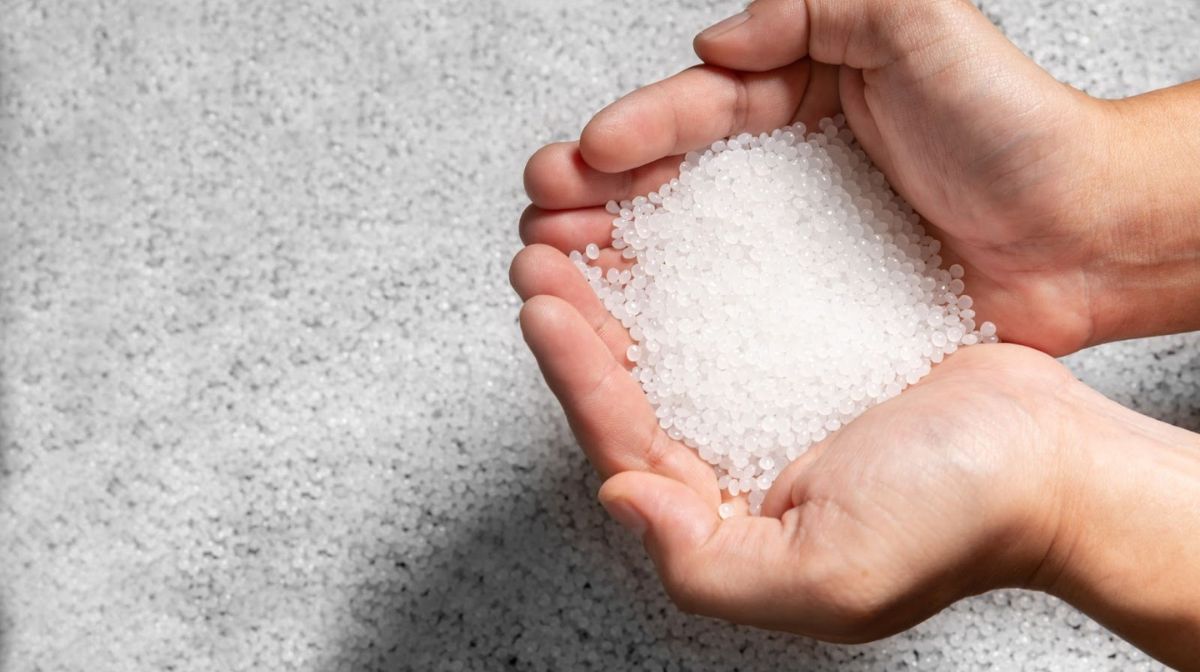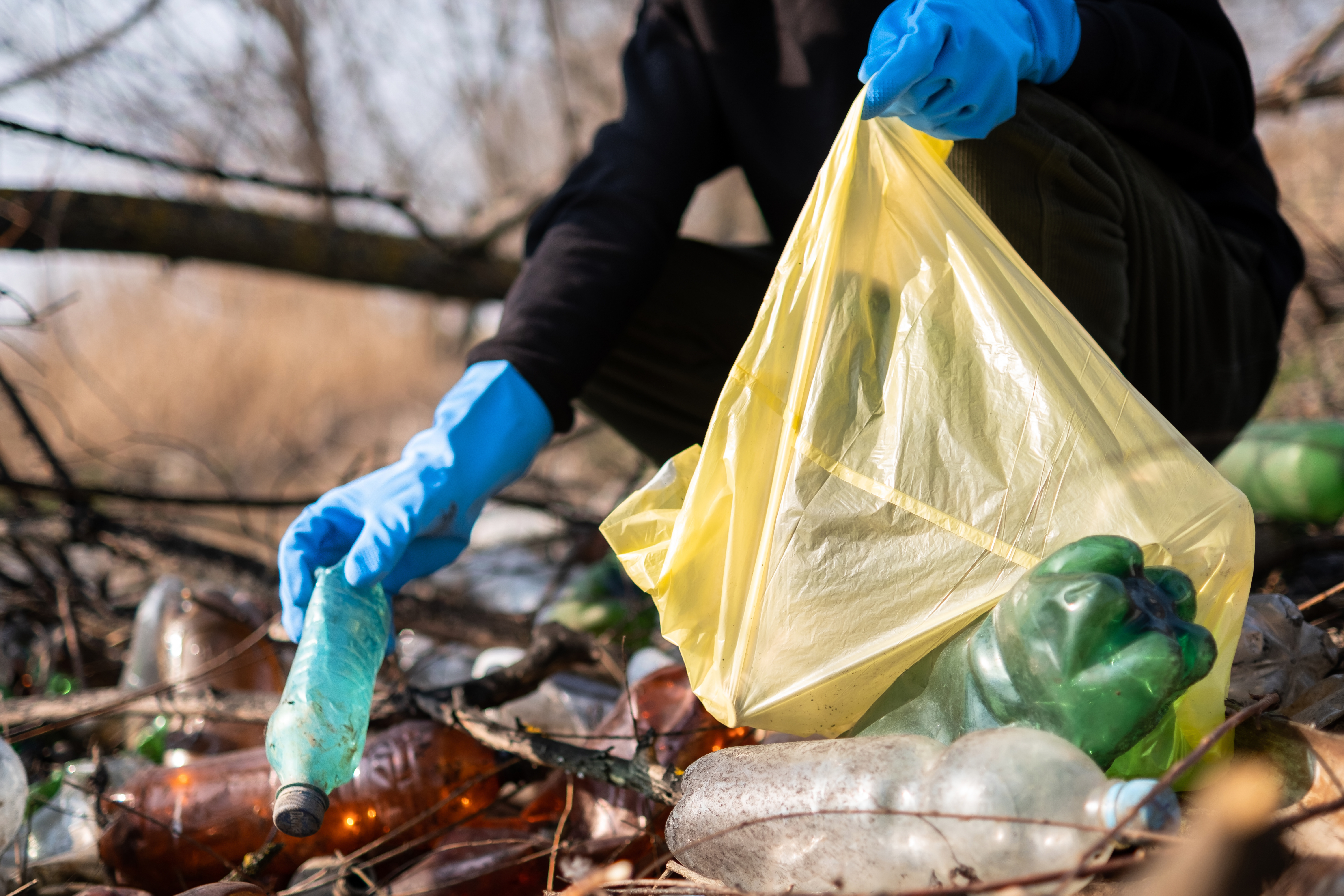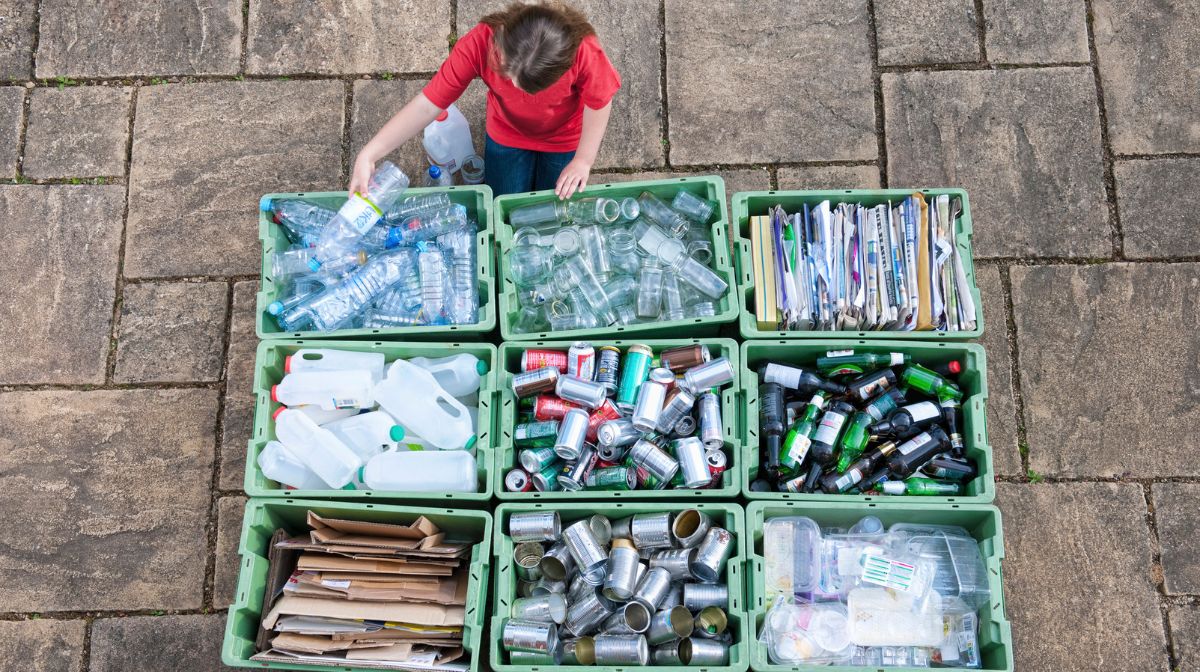KNOWLEDGE
Mechanical vs Chemical Post Consumer Recycled Resin

The plastics industry continues to face pressure from consumers to address the growing plastic pollution problem contributing to climate change. Recycling has been identified as a solution for a circular economy, but what happens after a plastic container has been recycled? Recycled plastics become processed and remade into post consumer resin (PCR). PCR is an umbrella term for a material that comes from any sort of recycled plastic. While water and beverage bottles are a common source of PCR, there are other plastic products that can be transformed into this material. When manufacturers choose PCR for their plastic needs, they help keep unwanted plastic out of landfills and become part of the solution to the global plastic waste problem.
In addition, manufacturing new products with post consumer recycled plastics reduces energy consumption by at least 79% and reduces greenhouse gas emissions by at least 67% compared to manufacturing new plastics.
Creating post consumer recycled content requires breaking down the plastic so it can be transformed into something new. Both mechanical recycling and chemical recycling are technologies for processing post consumer resin, and each has its benefits and drawbacks. Understanding these will help manufacturers make the best choice for purchasing post consumer resin.
What is Mechanical Recycling?
Mechanical recycling is a process that converts plastic waste into secondary raw material or products without significantly changing the chemical structure of the material. Meaning the polymer chains are not chemically disrupted in the process.
In Europe, mechanical recycling is the primary method of recycling, accounting for over 99% of recycled materials. However, the scope of recyclable materials is limited by local collection and processing capabilities. Most local authorities, such as in England, collect plastic bottles and packaging, and are implementing regulations to make recycling consistent from 2023 onwards. Previously, variations in material content and contamination levels hindered the production of consistent, high-quality recycled plastic.

Advantages of Mechanical Recycling
Mechanical recycling has several advantages. These include:
Substantial Energy Savings
Mechanical recycling is an efficient process that requires minimal energy. It offers significant energy and resource savings compared to creating new resins. Manufacturing products from recycled resin is three times more efficient than using new plastic.
Generally, The Cheaper Option
Because it is a simple process and because there are many facilities that offer mechanical recycling, it’s typically the cheaper option of the two. For manufacturers looking for a cost-effective way to address their plastic production responsibly and reduce their carbon footprints, it remains a good option.
Maintains Material Properties
Mechanical recycling is the process of recovering and reusing plastic waste through mechanical processes like sorting, washing, drying, grinding, and compounding. By not altering the chemical structure of the material, mechanical recycling enables multiple reuse and recycling cycles, forming a closed-loop system.
Well-Established Infrastructure
Most communities have plastic recycling centers nearby that utilize mechanical recycling. Mechanical recycling was the original method of processing PCR, which makes facilities with this capability more readily available. This established infrastructure makes it one of the more widely-used options.
Widely Accepted
The general public understands and accepts mechanical recycling as a positive way to deal with post consumer resin waste.

Limitations of Mechanical Recycling
Even though mechanical recycling is widely accepted, it is not without its weaknesses. Let’s examine some of the limitations when it comes to chemical recycling.
Downcycling
Mechanical recycling weakens the structure of plastic, reducing its value and quality because of the continuous mechanical breakdown during the recycling process. This is considered downcycling. The number of times plastics can be recycled this way is limited before the resin cannot maintain its structural integrity.
Mixed Plastics and Composites
Many plastics are actually composite materials formed by blending plastic polymers. These can be harder to recycle using mechanical processes because separating the different types of plastic polymers by simply melting and grinding is not possible.
Color Sorting and Impurities
Mechanical recycling of plastic requires careful sorting to produce a usable and desirable resin. It is important for the plastic to be relatively pure before recycling. This requires color sorting and removing impurities, which can create an additional strain on the system.
Limited Variety of Applications
Mechanically recycled plastic has limited applications due to its appearance despite maintaining its structural strength and properties. Mechanically recycled resins are not as clean and pure looking as virgin resins, making it a challenge to find suitable uses for recycled plastic due to its distinct look.
Public Perception
A joint survey by the World Economic Forum, SAP, and Qualtrics revealed that many people find recycling confusing and overwhelming. Despite high support for recycling and its prioritization, only 35% of Americans actually recycle regularly, primarily due to limited access. Additionally, consumers often lack an understanding of what can be recycled, leading to non-recyclable items being burned or landfilled. The survey suggests that a consistent recycling program can reduce confusion and waste by minimizing varying standards.
A new report by The Recycling Partnership found that only 21% of residential recyclables are recycled in the US. While 73% of households in the United States have access to recycling services, only 37% of multifamily households do. Furthermore, just 43% of households participate in recycling, and only 59% of those with access use their recycling service. Additionally, only 57% of recyclable materials are actually placed in recycling containers. The report emphasizes the need for investment in communication, outreach, and support to increase participation and achieve an effective recycling system where at least 90% of households participate.
What Is Chemical Recycling?
Chemical recycling, sometimes referred to as advanced recycling or the broader umbrella term – molecular recycling – encompasses various technologies using solvents, high heat, enzymes, and even sound waves to purify or break down plastic feedstocks. It aims to create polymers, monomers, oligomers, or hydrocarbon products that can re-enter manufacturing supply chains, diverting them from landfills.
A study by Closed Loop Partners categorized chemical recycling technologies into three groups: purification, depolymerization, and conversion. The report suggests that chemical recycling can complement mechanical recycling to handle a wider range of plastic waste, but it is not a standalone solution. Chemical recycling plays a crucial role in creating a waste-free future for hard-to-recycle plastics, particularly those beyond single-use and packaging applications.
Chemical recyclers convert plastic waste back into secondary raw materials or recycled feedstocks through processes like gasification, pyrolysis, and depolymerization. It differs from mechanical recycling as it alters the chemical structure of the waste, transforming it into chemical building blocks like monomers. These can then be reused as raw materials in chemical processes, reducing the need for virgin fossil resources. While still in its early stages, chemical recycling holds promise as a viable option for recycling plastic waste.

Advantages of Chemical Recycling
Chemical recycling offers some distinct advantages over mechanical recycling. Let’s take a closer look at some of the benefits chemical recycling offers.
Handles a Wider Range of Plastic Waste
Some types of plastics are hard to recycle. For example, mixed polymer plastics or plastics that are contaminated with toxic chemicals may not be candidates for mechanical recycling. These plastics can, however, be recycled using chemical methods.
Allows for Repeated Recycling
With mechanical recycling, the process weakens the plastic over time, limiting the number of times a plastic can be recycled before it wears out. This isn’t the case with chemical recycling. Chemical recycling can be done many more times because it creates a new polymer without physically breaking apart the plastic.
Improved Purity
The chemical recycling process creates plastic that is comparable in purity to newly manufactured plastic. This enhanced purity ensures that the recycled plastic performs similarly to the original plastic, making it suitable for high-quality applications where integrity and purity is essential.
Potential for Upcycling
Chemical recycling presents a significant advantage over mechanical recycling in terms of material quality. While mechanical recycling can only result in a lower-quality finished product made from plastic, chemical recycling offers the unique opportunity to actually enhance the quality of the material, if desired. This upcycling process is a substantial benefit of chemical recycling.
Reduced Reliance on Fossil Fuels
Globally, chemical recycling is significant in combating plastic waste leakage into the environment, particularly the littering of our oceans. Chemical recycling has a lower carbon footprint than traditional end-of-life practices like incineration and sending waste to the landfills. A Cefic-Quantis LCA report revealed that chemical recycling (pyrolysis) of mixed plastic waste emits less CO2 than incineration of the same waste.
Through chemical recycling, plastics can be transformed into new plastics, diverting them from being downcycled into inferior materials. This innovative process requires less fossil fuel consumption compared to conventional plastic production. By embracing chemical recycling, we can substantially reduce our dependence on fossil fuels, promoting a more sustainable future.

Limitations of Chemical Recycling
Despite its significant potential, chemical recycling is not without its drawbacks and constraints.
Let’s take a look at some of the limitations when it comes to chemical recycling.
Higher Energy Consumption
Though it requires fewer fossil fuels, the overall energy consumption for chemical recycling is significant.
Some scientists disagree with the claim that melting unsorted plastic is beneficial to the environment. The process of pyrolysis, which converts plastic waste into fuel and plastic resin, has been found to consume large amounts of energy and can generate toxic waste such as dioxins. It has also yet to prove capable of transforming unsorted garbage into high-quality fuel and clean plastic resin.
Using renewable energy sources could help limit this drawback, but it remains to be seen if chemical recycling is sustainable due to the high energy consumption.
Complex Infrastructure
The infrastructure necessary for chemical recycling is still under development. This complex process demands substantial investments in both infrastructure and technology to successfully carry out the recycling process. The cost of constructing a chemical recycling plant is approximately $200 million, which is a significant financial commitment.
Higher Cost
Chemical recycling incurs considerably higher costs compared to mechanical recycling. The resin used in chemical recycling is more expensive than that used in mechanical recycling. Moreover, the lack of infrastructure further contributes to the elevated overall cost of chemical recycling.
Environmental Concerns
Chemical recycling, in comparison to mechanical recycling, generates higher levels of CO2 emissions. Additionally, it uses acids and solvents to dissolve plastics, resulting in the presence of toxic chemicals in the waste generated by the recycling process. Ultimately, these chemicals may leak into the environment.
Public Perception
Public perception of chemical recycling is still developing due to a general lack of awareness about it. Additionally, many misconceptions exist regarding its potential environmental impacts.
While chemical recycling has potential, there is still a lot of research to be done to fully grasp the environmental impact of this type of recycling.
Key Differences Between Mechanical and Chemical Recycling
Both chemical and mechanical recycling have their benefits and limitations, but they have distinct differences worth considering.
First, they are different in their infrastructure. As chemical recycling is a relatively new concept, its infrastructure is not well-established compared to the existing infrastructure of mechanical recycling. Consequently, initiating a chemical recycling venture requires significantly higher upfront costs.
Second, they differ in their environmental impact. While keeping plastic waste out of landfills is always a good choice, there is an environmental impact to recycling. Mechanical recycling uses more fossil fuels than chemical, but chemical recycling may create more hazardous waste due to the chemicals used in the process.
Finally, the quality of the recycled plastic is a key difference. Chemical recycling creates a pure plastic that can be used for higher quality projects and won’t deteriorate after each life cycle, while mechanical recycling breaks down the strength of the plastic, resulting in a recycled product that is always of lesser quality and limited future recyclability.

The Future of PCR Recycling
The future of post-consumer recycled (PCR) content is promising, driven by its significance in creating environmentally sustainable products. The market for PCR is anticipated to experience significant growth over the next five years, with the potential for PCR usage in packaging to reach 5.6 million tons by 2026.
Mechanical recycling will remain the dominant source of PCR, but investment in chemical recycling is also poised to increase. Companies in the US are investing over $8 billion to develop the infrastructure necessary for chemical recycling to become a viable option.
The long-term vision for PCR content is a combination of mechanical and chemical recycling methods. This approach aims to promote a circular economy, a restorative economic model designed to minimize waste and extend the lifespan of resources. It operates in a closed-loop system, emphasizing the “reduce, reuse, recycle” approach and minimizing the negative environmental impacts through effective waste management. The use of cutting-edge recycling technologies plays a vital role in the transition toward a circular economy model.
Stay on Top of the PCR World with Paramount Global
At Paramount Global, we offer integrated packaging and supply chain solutions. Our wide range of products include PCR content as well as glass and aluminum for your sustainable packaging needs.
Contact us today to learn more about our packaging solutions and discover how we can help take your business to next level.
Hayley is a marketing professional and copywriter with a background in crafting content for a diverse range of industries. She has been writing about packaging and supply chain logistics for Paramount Global since 2022. She specializes in explaining complex topics in a clear and engaging way and is an advocate for sustainability in packaging and supply chain management.
Read More
For over forty years, Paramount has been delivering perfectly integrated packaging and supply chain solutions.
